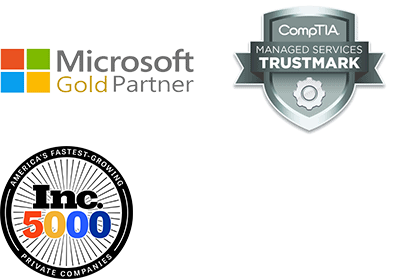We’ve all been jumping on the cloud train and learning how to use its resources to help our businesses. Many companies started with easy workloads, migrating email services to Office 365 or moving development servers to public cloud spaces. As these workloads have moved, organizations are figuring out what’s next. And the answer is startling: companies are achieving incredible savings and benefits — such as greater control in storing documents, tracking information, automating key work processes and handling creation and control of common forms — by moving to the cloud. And, according to industry research, they are doing it by using Microsoft SharePoint — the leading tool used by 78% of Fortune 500 companies to develop their online and offline capabilities. Here’s the good news: SharePoint is not just for larger corporations; small companies can benefit as well thanks to O365. So maybe it’s time to consider adopting it at your company.
Reasons to Deploy SharePoint
1. DocumentStorage & Management
In its basic form, SharePoint can allow many organizations to eliminate on-premise file servers and move documents to SharePoint online for document management, control and even collaboration.
As a document management system, SharePoint provides document version history which contains information about when the item or file was changed, who changed it, and information about what was changed. SharePoint automatically captures versions of your content as it changes over time. Authors can view and restore previous versions to recover from unexpected changes
One of the powerful features of SharePoint is its strong search capability. With the ability to search not only the file name but content inside documents, users have many ways to easily locate the content they need. One way to make it easier for users to locate SharePoint documents is to enforce the use of metadata. SharePoint contains options that allow you to define individual content types and to create custom metadata fields for each one. You can require users to enter relevant metadata for each document they create. This metadata goes a long way toward helping SharePoint return relevant search results.
2. Business Process Workflow & Automation
Out-of-the-box solutions are imbedded in SharePoint to collect critical business information from customers, partners and suppliers through a Web browser. Built-in data validation rules help you gather accurate and consistent data that can be directly integrated into back-end systems, thereby avoiding redundancy and errors that result from manual data re-entry.
SharePoint also has many of ready-to-roll workflows for tracking and reporting common business activities, such as document review and approval, issue tracking and signature collection. On top of that, no coding is necessary to take advantage of these features!
By combining forms and workflow functionality together, SharePoint provides a powerful tool to improve efficiency, reduce errors and help automate routine tasks. Consider, for example, what happens when a customer applies for a mortgage. The loan officer has the customer fill out a long paper-based form which first gets checked by the loan officer, then is routed to the underwriter for approval and finally back to the loan officer and customer for review. With Sharepoint, this process can all be automated with forms and workflow within SharePoint so that the form can be filled out electronically, submitted and automatically routed to all parties in the approver process, saving time and money and reducing the possibility of error.
3. Regulation Requirements
Many organizations big and small are burdened with extensive regulations regarding how they manage customer data. Ensuring everyone is complying with the rules can become extremely complex. Utilizing SharePoint, organizations can specify security settings, storage policies, auditing policies and expiration actions for business records in accordance with compliance regulations. SharePoint can help ensure your sensitive business information can be controlled and managed effectively, reducing litigation risk for your organization.
4. Increased Business Intelligence
SharePoint makes it easy to create live, interactive business intelligence (BI) portals that assemble and display business-critical information from disparate sources, using integrated BI capabilities, such as dashboards, Web Parts, scorecards, key performance indicators (KPIs) and business data connectivity technologies. BI portals can be displayed for the entire organization or be customized for each user’s/team’s home page with only relevant data displayed.
5. Remote Workers
Many companies still utilize archaic VPN technologies to enable users to access files remotely. With SharePoint, working on the road or from home now gets easy for your employees! With Office 365 and SharePoint Online, your users are no longer tied down to a single device, or a single network. Imagine a world where you can access your e-mail, documents, contacts, and intranet from any browser on any device on any Internet connection. Maybe you’re going on the road, and only going to have intermittent Internet access? Just sync content from SharePoint Online, and whatever changes you’ve made while offline will upload to SharePoint once you’ve reconnected to the Internet. With SharePoint Online and Office 365, the world is your workspace!
Pitfalls to Avoid
1. Environment Assessment – It’s Not Just an IT Issue
All too often, companies see a migration as a technical project only —they expect the IT team to create the migration strategy, carry it out, and then make sure everything’s running smoothly in the new environment. This couldn’t be further from the truth.
Migrating to SharePoint Online is an organization-wide activity. Right from the beginning you should have representatives from different departments involved in the planning, working as advocates for their teams.
Just forklifting all your messy existing file structure into SharePoint is a recipe for project failure. When migrating to SharePoint assessing everything from the existing file structure layout, how departments are structured within the organization to how people communicate and collaborate across the organization are important factors that need to be evaluated to provide the best design. Work with users and managers to gain insights into their daily communications and workflows to optimize your SharePoint design.
2. Training Failures
Migrating to SharePoint is a big leap from a traditional file server environment. It has a whole range of new features, a different interface, and works in a different way. You must provide adequate training to users, showing them everything from navigation, access methods, layout and location of files, metadata tagging, search and synchronization options to name a few. A great tool for this is QuickHelp, a Microsoft online, interactive, training program that can be accessed directly through Office 365.
Once they’re settled in, train them again and gather feedback for improvements; otherwise you won’t get substantial ROI on your migration.
Final Thoughts
SharePoint has many benefits and is becoming the new standard for cloud-based file storage. Organizations of all sizes are utilizing SharePoint for better document management control, streamlining processes through workflow automation and forms-based routing, centralized dashboards and better access to mobile users.
While there are other pitfalls to failed SharePoint migrations, the ones outlined above are the two that most impact the overall success of the project and the ones I see happen most often. I recommend that organizations not familiar with SharePoint and its capabilities ask for help from SharePoint experts to provide an assessment and layout a plan and design for migration.
If you’ve had a positive or negative SharePoint migration experience, please share your comments!
This article was written by James Walstad, Director of Sales at Applied Tech. James has over 20 years IT expertise where he has overseen various technical projects from implementing storage systems, supporting multi-server environments, and numerous cloud migrations.







